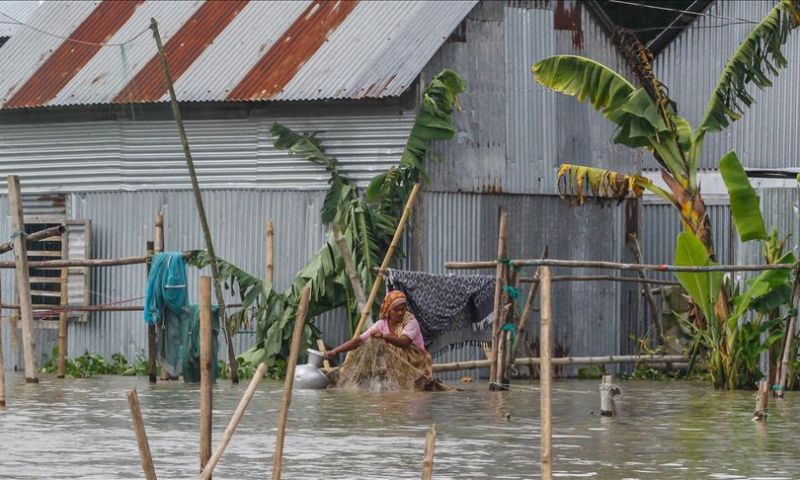DHAKA: The death toll from the devastating floods in Bangladesh has risen to 71 as of Tuesday, with millions still stranded in severely affected areas and growing fears of waterborne disease outbreaks as floodwaters begin to recede.
The floods, caused by relentless monsoon rains and runoff from upstream rivers, have wreaked havoc over the past two weeks, impacting around five million people.
More than 580,000 families remain isolated in 11 flood-hit districts, urgently needing food, clean water, medicine, and dry clothing. Relief efforts are underway, with nearly 500 medical teams and support from the army, air force, navy, and border guards.
As floodwaters recede, authorities are focusing on preventing the spread of waterborne diseases and ensuring access to clean drinking water. The Directorate General of Health Services reported that nearly 5,000 people have been hospitalized in the past 24 hours due to diarrhoea, skin infections, and snake bites.
In the capital Dhaka, heavy rain on Tuesday inundated many districts, submerging roads with knee-deep to waist-high water and causing massive traffic jams.
The agriculture ministry has assessed that floods have damaged crops worth 33.5 billion taka ($282 million), affecting over 1.4 million farmers.
The World Bank Institute’s 2015 analysis had already highlighted the risk of annual river flooding in Bangladesh, a threat exacerbated by climate change.
The United Nations Children’s Fund (UNICEF) has identified two million children at risk from the severe flooding, the worst the country has seen in three decades.
UNICEF has launched an urgent appeal for $35 million to provide essential aid to those affected. Emma Brigham, Deputy Representative of UNICEF Bangladesh, emphasized, “Year after year, floods, heatwaves, and cyclones are devastating the lives of millions of children in Bangladesh. Climate change is significantly altering their lives.”























